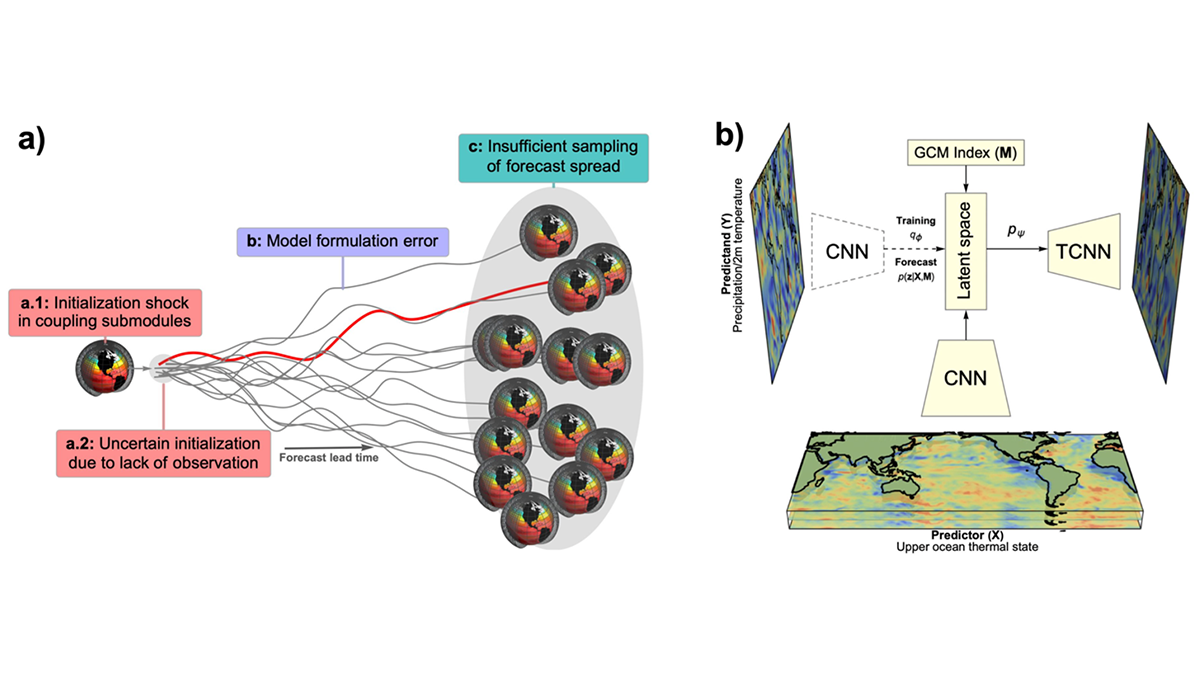Editors’ Highlights are summaries of recent papers by AGU’s journal editors.
Source: Journal of Advances in Modeling Earth Systems
Skillful seasonal forecast benefits a broad range of societal sectors. However, current dynamical seasonal forecast systems face three stubborn challenges. First, we may start from a “wrong” place: it is difficult to align a model’s state to match observations at forecast starting time, due to limited coverage of observations, or the state shock problem. Second, we may follow “wrong” paths: the forecasting models cannot perfectly simulate the climate state evolution trajectory, due to poor representation of unresolved climate processes. Third, we may have not tried all possibilities: using limited (~10) forecasting ensemble members, we may not have sufficiently sampled the plausible future climate states. The huge observational, computational, and intellectual cost for resolving these challenges have significantly slowed down our progress toward better seasonal forecast.
Targeting toward these three challenges, Pan et al. [2022] developed a deep learning model that learns from climate simulation big data for seasonal forecast. Their Conditional Generative Forecasting (CGF) methodology applies a deep generative modeling technique to sample possible climate states a season ahead and adopts a transfer learning technique to account for the data-generating climate model formulation differences. These treatments allow bypassing the aforementioned barriers in dynamical forecast, offering a top-down viewpoint to examine how complicated climate models encode the seasonal predictability information.
Experiments for global seasonal forecast of precipitation and 2 m air temperature show that the CGF methodology achieves competitive performance compared to dynamical forecasts. Using this CGF as benchmark, the authors reveal the impact of insufficient forecast spread sampling that limits the skill of the considered dynamical forecast system. Furthermore, the authors introduced different strategies for composing forecasting ensembles using the CGF methodology, highlighting the potential for leveraging the strengths of multiple climate models to achieve advantageous seasonal forecast.
Citation: Pan, B., Anderson, G. J., Goncalves, A., Lucas, D. D., Bonfils, C. J. W., & Lee, J. (2022). Improving seasonal forecast using probabilistic deep learning. Journal of Advances in Modeling Earth Systems, 14, e2021MS002766. https://doi.org/10.1029/2021MS002766
—Jiwen Fan, Editor, Journal of Advances in Modeling Earth Systems

